Osteopathic manipulative therapy (OMT) is a medical technique that focuses on manipulating a patient’s joints and soft tissues to diagnose and treat a wide array of medical problems. Originating about 150 years ago, osteopathic medicine sprang from a desire by physicians to provide holistic care, recognizing that illnesses affect the entire body, not simply isolated parts.
Today, many people confuse OMT with other therapies like massage because both techniques use a hands-on approach to care. But OMT and massage are very different in key ways, and understanding those differences is important for making sure you get the best care, especially if you’re recovering from an injury or have musculoskeletal symptoms.
At Jersey Integrative Health and Wellness, our team uses state-of-the-art osteopathic manipulation therapy techniques to provide whole-patient care for women and men in Wayne and Jersey City, New Jersey. In this post, learn what OMT is and how it differs from massage.
Osteopathic manipulation vs. massage
Most people agree that getting a massage is a great way to relieve stress and enjoy deep relaxation. Certain types of massage can stimulate circulation and reduce the strain that comes from poor posture and other habits.
But while massage can be a good adjunctive therapy for pain and injuries involving soft tissues, it isn’t designed to be a complete treatment for most injuries and ailments involving acute or chronic pain.
By contrast, osteopathic manipulation therapy is a medical therapy focused on the complete treatment of issues involving joints, soft and connective tissues, nerves, and other parts of the musculoskeletal system. We routinely recommend OMT for patients with:
- Sports injuries
- Back pain
- Neck pain
- Arthritis
- Strained muscles
- Sprained ligaments
- Joint pain
- Nerve-related pain
Each care plan begins with a comprehensive physical exam to ensure OMT is the right approach.
During treatment, OMT uses a series of thrusts and other specific and targeted movements to relieve pain and promote overall healing and wellness. Depending on your specific needs, our team may recommend a variety of OMT techniques, including:
- Myofascial release
- Soft tissue stretching
- Muscle energy technique
- Osteopathic cranial manipulative techniques
OMT also involves lifestyle guidance and at-home exercises to continue healing and prevent relapse or recurrence.
What happens during your visit
A typical massage visit begins with a brief review of your concerns, followed by the massage itself. OMT treatment starts with a physical exam performed by a doctor trained in osteopathic techniques.
During your visit with our team, your exam includes a hands-on assessment to look for areas of weakness or discomfort to help us design an optimal treatment plan. Therapy may be performed using hands-on techniques or special instruments designed specifically for OMT.
Then, we work with you to teach you special at-home exercises, along with lifestyle guidance to keep your treatment on track. Regular check-ins ensure you continue to receive therapies adjusted to your needs as healing progresses, keeping you on the path to greater comfort and better health.
Learn how osteopathic manipulation can benefit you
While massage definitely has a place in health and wellness, osteopathic manipulation therapy is a more comprehensive type of treatment focused on healing injuries and improving overall health and wellness. To learn how OMT can benefit you, request an appointment online or over the phone with the team at Jersey Integrative Health and Wellness today.


